Monthly Archives: September 2018
 After the August 18, 1976 ace murder of two United States Army officers, Captain Arthur Bonifas and Lieutenant Mark Barrett, by North Korean soldiers, in the Joint Security Area located in the North Korean Demilitarized Zone, it was decided that something had to be done about a certain poplar tree that blocked the view of UN observers, allowing them to be assaulted and killed by the North Koreans, who claimed that the tree had been planted by Kim Il-Sung. It was dubbed the Panmunjom axe murder incident, and it was infuriating to the United States.
After the August 18, 1976 ace murder of two United States Army officers, Captain Arthur Bonifas and Lieutenant Mark Barrett, by North Korean soldiers, in the Joint Security Area located in the North Korean Demilitarized Zone, it was decided that something had to be done about a certain poplar tree that blocked the view of UN observers, allowing them to be assaulted and killed by the North Koreans, who claimed that the tree had been planted by Kim Il-Sung. It was dubbed the Panmunjom axe murder incident, and it was infuriating to the United States.
Three days later, American and South Korean forces launched Operation Paul Bunyan. There was one objective to Operation Paul Bunyan…cut down the tree with a show of force to intimidate North Korea into backing down. Operation Paul Bunyan was carried out on August 21 at 07:00, three days after the killings. A convoy of 23 American and South Korean vehicles, known as “Task Force Vierra”, named after Lieutenant Colonel Victor Vierra, commander of the United States Army Support Group, drove into the JSA without any warning to the North Koreans. There was just one observation post manned at that hour. The vehicles contained two eight-man teams of military engineers from the 2nd Engineer Battalion, 2nd Infantry Division, equipped with chain-saws to cut down the tree. Accompanying these teams were two 30-man security platoons from the Joint Security Force, who were armed with pistols and axe handles. The 1st Platoon secured the northern entrance to the JSA via the Bridge of No Return, while the 2nd Platoon secured the southern edge of the area. A team from B Company, commanded by Captain Walter Seifried, activated the detonation systems for the charges on Freedom Bridge and had the 165mm main gun of the M728 combat engineer vehicle aimed mid-span to ensure that the bridge would fall should the order be given for its destruction.
B Company, supporting E Company (bridge), were building M4T6 rafts on the Imjin River should the situation require emergency evacuation by that route. An additional 64-man task force of the South Korean Special Forces accompanied them, armed with clubs and trained in Tae Kwon Do, supposedly without firearms. Once 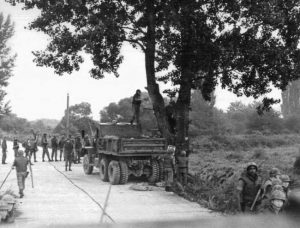 they parked their trucks near the Bridge of No Return, however, they started throwing out the sandbags that lined the truck bottoms, and handing out M16 rifles and M79 grenade launchers that had been concealed below. Several of the commandos also had M18 Claymore mines strapped to their chests with the firing mechanism in their hands, and were shouting at the North Koreans to cross the bridge. A U.S. Infantry company in 20 utility helicopters and seven Cobra attack helicopters circled behind them. Behind these helicopters, B-52 Stratofortresses, came from Guam escorted by US F-4 Phantom IIs from Kunsan Air Base and South Korean F-5 and F-86 fighters were visible flying across the sky at high altitude. At Taegu Air Base, F-111 bombers of the 366th Tactical Fighter Wing out of Mountain Home Air Force Base, were stationed, and F-4 Phantoms C and D from the 18th TFW Kadena Air Base and Clark Air Base were also deployed. The aircraft carrier USS Midway task force had also been moved to a station just offshore. Near the edges of the DMZ, many more heavily armed U.S. and South Korean infantry, artillery including the Second Battalion, 71st Air Defense Regiment armed with Improved Hawk missiles, and armor were waiting to back up the special operations team. Bases near the DMZ were prepared for demolition in case of a military response. The defense condition (DEFCON) was elevated on order of General Stilwell, as recounted in Colonel De LaTeur’s research paper later. 12,000 additional troops were ordered to Korea, including 1,800 Marines from Okinawa. During the operation, nuclear-capable strategic bombers circled over the JSA. According to an intelligence analyst monitoring the North Korea tactical radio net, the accumulation of force “blew their… minds.” Altogether, Task Force Vierra consisted of 813 men: almost all of the men of the United States Army Support Group, of which the Joint Security Force was a part; a South Korean reconnaissance company; a South Korean Special Forces company which had infiltrated the river area by the bridge the night before; and members of a reinforced composite rifle company from the 9th Infantry Regiment. In addition to this force, every UNC force in the rest of South Korea was on battle alert.
they parked their trucks near the Bridge of No Return, however, they started throwing out the sandbags that lined the truck bottoms, and handing out M16 rifles and M79 grenade launchers that had been concealed below. Several of the commandos also had M18 Claymore mines strapped to their chests with the firing mechanism in their hands, and were shouting at the North Koreans to cross the bridge. A U.S. Infantry company in 20 utility helicopters and seven Cobra attack helicopters circled behind them. Behind these helicopters, B-52 Stratofortresses, came from Guam escorted by US F-4 Phantom IIs from Kunsan Air Base and South Korean F-5 and F-86 fighters were visible flying across the sky at high altitude. At Taegu Air Base, F-111 bombers of the 366th Tactical Fighter Wing out of Mountain Home Air Force Base, were stationed, and F-4 Phantoms C and D from the 18th TFW Kadena Air Base and Clark Air Base were also deployed. The aircraft carrier USS Midway task force had also been moved to a station just offshore. Near the edges of the DMZ, many more heavily armed U.S. and South Korean infantry, artillery including the Second Battalion, 71st Air Defense Regiment armed with Improved Hawk missiles, and armor were waiting to back up the special operations team. Bases near the DMZ were prepared for demolition in case of a military response. The defense condition (DEFCON) was elevated on order of General Stilwell, as recounted in Colonel De LaTeur’s research paper later. 12,000 additional troops were ordered to Korea, including 1,800 Marines from Okinawa. During the operation, nuclear-capable strategic bombers circled over the JSA. According to an intelligence analyst monitoring the North Korea tactical radio net, the accumulation of force “blew their… minds.” Altogether, Task Force Vierra consisted of 813 men: almost all of the men of the United States Army Support Group, of which the Joint Security Force was a part; a South Korean reconnaissance company; a South Korean Special Forces company which had infiltrated the river area by the bridge the night before; and members of a reinforced composite rifle company from the 9th Infantry Regiment. In addition to this force, every UNC force in the rest of South Korea was on battle alert.

All this to cut down one tree!! My first thought on all this was…overkill, to the extreme!! That’s what I thought at first, but after researching the operation more, I realized that this was as much a show of force, as it was a way to cut down a tree that was really blocking a view that was necessary for keeping soldiers safe. North Korea needed to be shown what could come of such an attack, should it ever happen again. And it worked…North Korea accepted responsibility for the earlier killings. The incident is also known alternatively as the hatchet incident, the poplar tree incident, and the tree trimming incident. Final loss of life, two American Army officers, and one poplar tree.
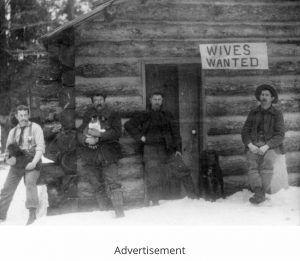 Most of us have either seen or heard of the television show called “The Bachelor.” The show is all about a single man in search of a bride. Of course, these days there are many ways to find the girl of his dreams, and most men would never go on television and let some reality show match him up with ten women for him to choose from. Of course, the idea of online dating sites is new and for some of us, still shocking too.
Most of us have either seen or heard of the television show called “The Bachelor.” The show is all about a single man in search of a bride. Of course, these days there are many ways to find the girl of his dreams, and most men would never go on television and let some reality show match him up with ten women for him to choose from. Of course, the idea of online dating sites is new and for some of us, still shocking too.
Many years ago, in the old west…especially during the gold rush days, the men in the west found themselves lonely…very lonely. They didn’t want to go back east, and few good women came to the west in those early days. Those were desperate times in the emotional lives of the gold rushers. The west was wild and unsettled, and even into the 1900s short on eligible women to marry.
There were no computers or smart phones then, and no dating apps or websites. So in an effort to find a wife, several eligible bachelors would stand in front of a log cabin, spiffed up as much as they could be, I suppose, many with beards, trying to let ok like a great catch. The photograph was then placed as an advertisement in papers back east. Personally, I don’t know if I would have been very inclined to jump on a train and head west to meet up with a man who was looking for a wife. Mail-order brides, sort of. These men would still have to woo the women, win them over, because these women weren’t slaves, and they weren’t required to stay. These bachelors would have to “sell” themselves and their lifestyle to these women, along with making the women fall in love with them.
I wondered, what kind of woman would answer such an ad. I don’t mean a loose woman, but likely a woman  who was a little bit past the normal marrying age of that time. An eighteen year old girl would never be the one to go. Her parents would likely never let her, but s woman who was in her mid-twenties would be viewed as a spinster, usually a school teacher, so she could take care of herself. She could tell her family that she was taking a job in the west. I’m sure they would be upset, but it would be her choice. And her family would have known it. Some women had no one, so there might be nothing to stop them. Still, going into the unknown like that would be scary. I don’t know how many of these men successfully found wives this way, but I suppose that if even a few did, it would be a successful bachelor show…of the time, anyway.
who was a little bit past the normal marrying age of that time. An eighteen year old girl would never be the one to go. Her parents would likely never let her, but s woman who was in her mid-twenties would be viewed as a spinster, usually a school teacher, so she could take care of herself. She could tell her family that she was taking a job in the west. I’m sure they would be upset, but it would be her choice. And her family would have known it. Some women had no one, so there might be nothing to stop them. Still, going into the unknown like that would be scary. I don’t know how many of these men successfully found wives this way, but I suppose that if even a few did, it would be a successful bachelor show…of the time, anyway.
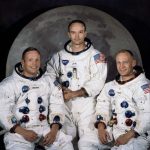 When the Apollo 11 crew landed on the moon, the world waited with unbridled excitement to view the moon rocks they were bringing back. It was an unprecedented event. Never before had man been able to look upon these space rocks. Soon, the astronauts would be treated to a ticker tape parades, and of course, the world tour to tell of their amazing escapades.
When the Apollo 11 crew landed on the moon, the world waited with unbridled excitement to view the moon rocks they were bringing back. It was an unprecedented event. Never before had man been able to look upon these space rocks. Soon, the astronauts would be treated to a ticker tape parades, and of course, the world tour to tell of their amazing escapades.
However, before all that, the astronauts had to do something that every world traveler understands…go through customs. What??? When I read that, I was stunned. Why would they need to go through customs? It’s not like they went shopping on the moon. Then again, they did bring back something they didn’t take with them…moon rocks, moon dust and other lunar samples, according to the customs form filed at the Honolulu Airport in Hawaii on July 24, 1969…the day the Apollo 11 screw splashed down in the Pacific Ocean to end their historic moon landing mission. Nevertheless, NASA had those almost immediately, didn’t they?
Apollo 11 astronauts Neil Armstrong, Buzz Aldrin and Michael Collins hd to declare the things they brought back, just like everyone else, and they had to declare not only their cargo, but also had to list their flight route as starting Cape Kennedy (now Cape Canaveral) in Florida with a stopover on the moon. Then all three men had to sign the form, so everything was legal.
The form was posted to the U.S. Customs and Border Protection Web site in 2009, to mark the Apollo 11 mission’s 40th anniversary. A copy was obtained by SPACE.com and verified by NASA. John Yembrick told SPACE.com that it was indeed authentic, was a little joke at that time, and maybe it was, but the reality is that not much has changed over the years. The big joke was the fact that because Apollo 11 splashed down 920 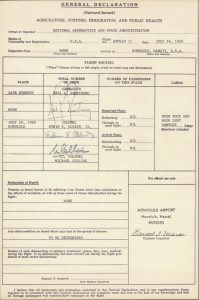 miles southwest of Hawaii and 13 miles from the USS Hornet, the Navy ship sent to recover the crew. It took two more days for the astronauts to actually return to Hawaii on July 26, where they were welcomed with a July 27 ceremony at Pearl Harbor. So customs was a bit delayed.
miles southwest of Hawaii and 13 miles from the USS Hornet, the Navy ship sent to recover the crew. It took two more days for the astronauts to actually return to Hawaii on July 26, where they were welcomed with a July 27 ceremony at Pearl Harbor. So customs was a bit delayed.
Still, the astronauts were trapped inside a NASA trailer as part of a quarantine effort. The concern was the possibility of germs they might have picked up. They had to wear special biological containment suits when they walked out on the deck of the USS Hornet after being retrieved. Then, NASA transported them to Houston, quarantine trailer and all, and they emerged from isolation three weeks later. Today’s returning astronauts exit their spacecraft almost immediately. Some, who have been in space a long time receive medical checks after spending months in the weightlessness of space. Nevertheless, today’s NASA astronauts still have to go through customs, and I still find that quite funny.
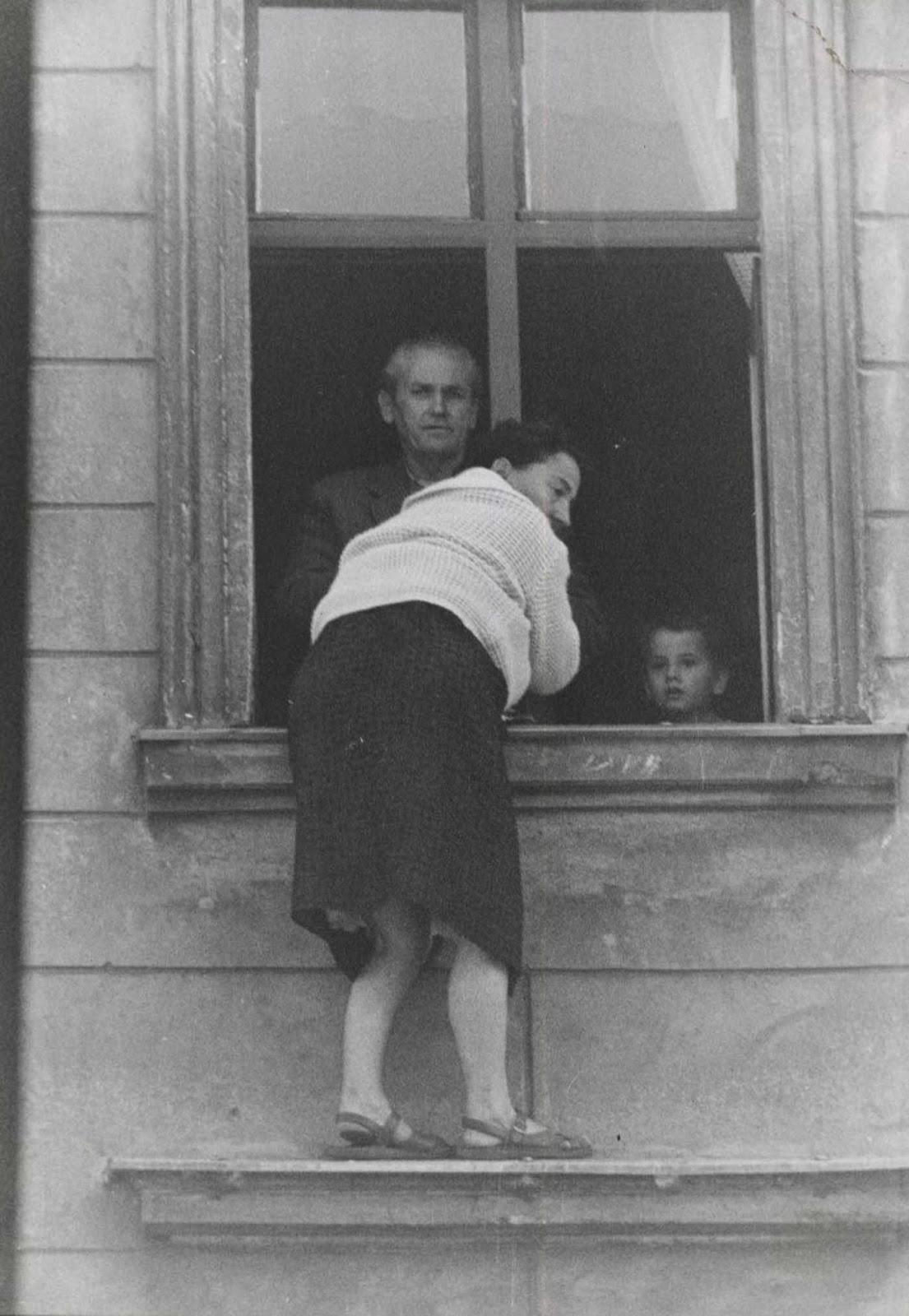 Imagine a world in which you could go to sleep living in freedom, and wake up behind prison walls…and you didn’t leave your home. That is exactly what happened to the people who lived in East Berlin. The Berlin Wall was erected overnight on August 13, 1961. The people of East Berlin were prisoners in their own city. Many of them had friends and family members who lived in West Berlin, but they were no longer allowed to go and see them, nor could the West Berliners come to East Berlin to see the inhabitants of that part of the city. The people in East Berlin were in a panic, and yet nothing could be done to free themselves from their plight. At least, not until they began to get very creative.
Imagine a world in which you could go to sleep living in freedom, and wake up behind prison walls…and you didn’t leave your home. That is exactly what happened to the people who lived in East Berlin. The Berlin Wall was erected overnight on August 13, 1961. The people of East Berlin were prisoners in their own city. Many of them had friends and family members who lived in West Berlin, but they were no longer allowed to go and see them, nor could the West Berliners come to East Berlin to see the inhabitants of that part of the city. The people in East Berlin were in a panic, and yet nothing could be done to free themselves from their plight. At least, not until they began to get very creative.
Many attempts were made in an effort to escape their captors, and many of those failed, but it would be the successful attempts at escape that would stay in our minds all these years. It was the successful attempts that were written about and celebrated in history, because those people won against a tyrannical government. One such escape was captured in pictures. Early in the construction, before most people even knew what was going on, Willy Finder figured it out and took steps to get his family out. His was a daring plan,but the people of West Berlin were willing to help pull it off. Willy’s wife was the first to go. I con only imagine how she must have felt. The plan required her to jump from the window ledge of their 4th story 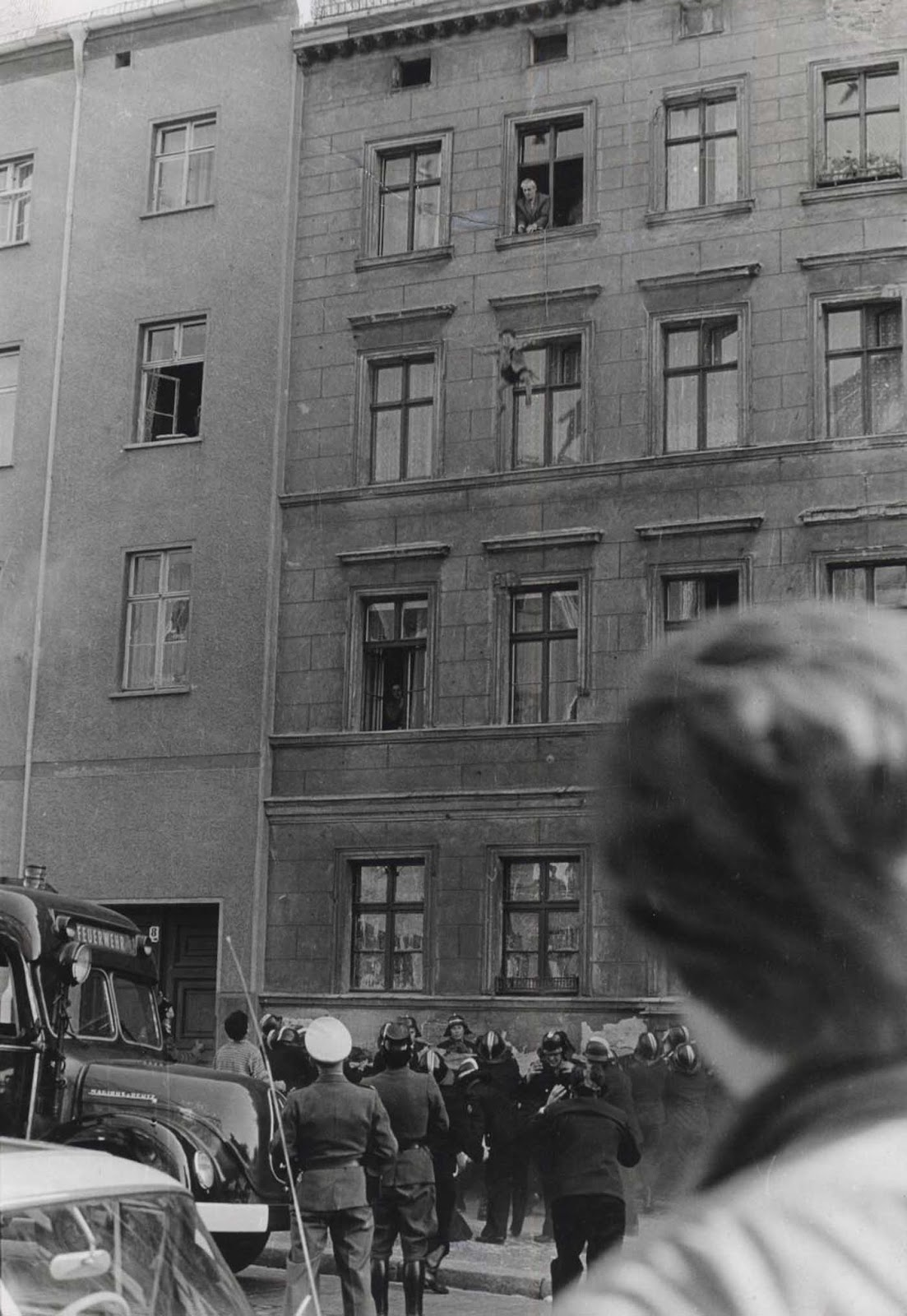 apartment, into a net held by residents and firemen in West Berlin. These apartments were along Bernauer Straße (street) in Berlin. The building actually saddled the border between East and West Berlin. After the wall was first constructed in 1961, many residents escaped through these apartment blocks, in this manner. So many, in fact, that the Soviets finally bricked up the windows and raided the apartments, evicting the people who lived there. After his mother jumped, four year old Michael Finder was tossed by his father to the waiting net below. There was no time to explain all this to his son…no time to reassure him. His daddy simply had to toss in out the window. Then Willy Finder made the jump himself. Theirs was a successful escape, one of many, and this infuriated the Soviet Union, because this was a part of the Soviet occupation zone formed after the reconstruction that followed World War II.
apartment, into a net held by residents and firemen in West Berlin. These apartments were along Bernauer Straße (street) in Berlin. The building actually saddled the border between East and West Berlin. After the wall was first constructed in 1961, many residents escaped through these apartment blocks, in this manner. So many, in fact, that the Soviets finally bricked up the windows and raided the apartments, evicting the people who lived there. After his mother jumped, four year old Michael Finder was tossed by his father to the waiting net below. There was no time to explain all this to his son…no time to reassure him. His daddy simply had to toss in out the window. Then Willy Finder made the jump himself. Theirs was a successful escape, one of many, and this infuriated the Soviet Union, because this was a part of the Soviet occupation zone formed after the reconstruction that followed World War II.
The Soviet occupation zone in Germany, and in Berlin, was suffering from numerous movements of educated individuals from their sectors toward the West throughout the 1950s. This movement, thought to be a brain drain, encouraged the Soviet Union to begin construction of a “Fascist Protection Wall” that was supposed to keep East Germans protected from “Fascism” that the Western Allies had “not eradicated in their sectors.” Of course, the reality was that the wall, later called the Berlin Wall, was designed to keep East Germans from emigrating to the West. The apartments 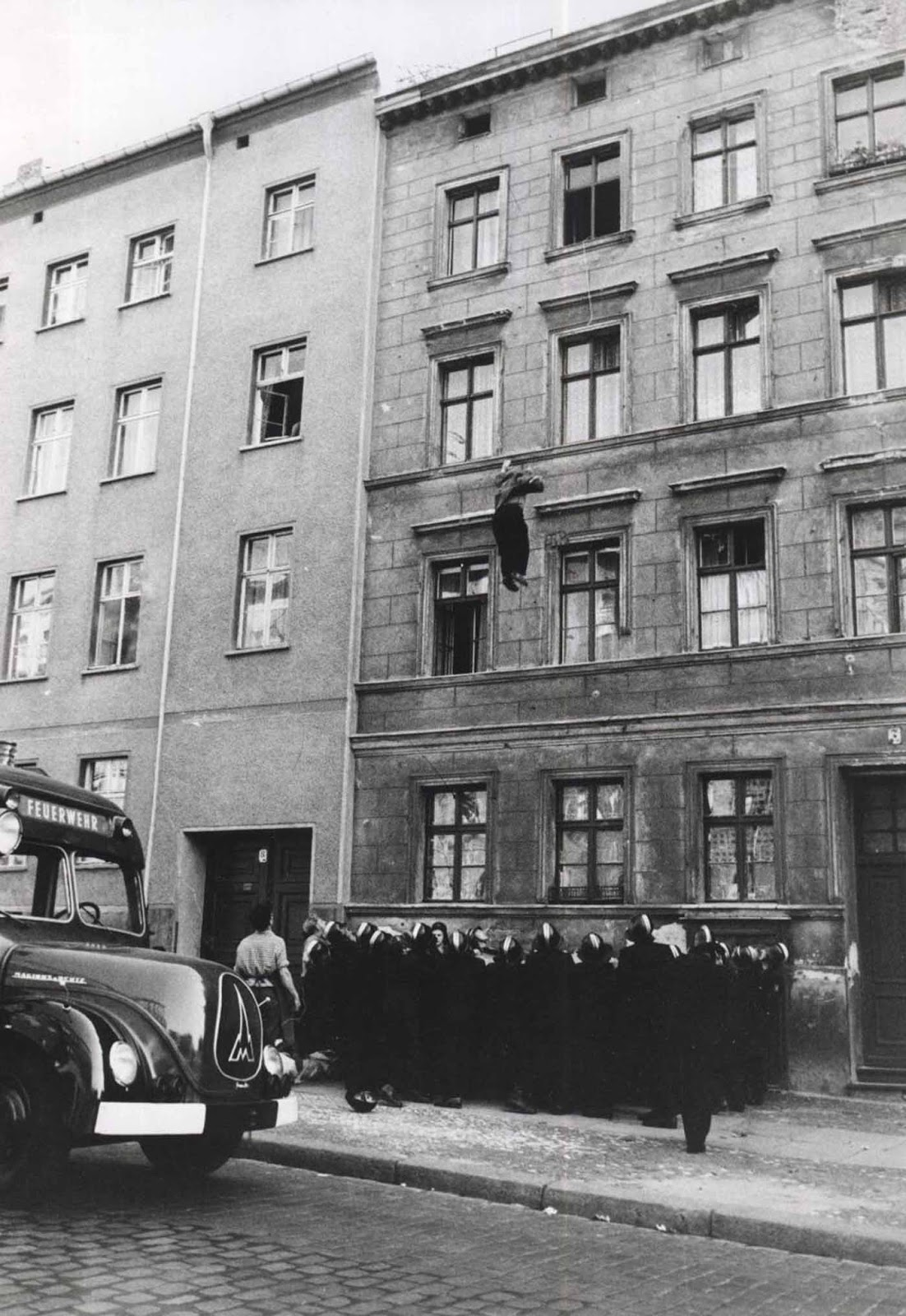 where the Finders lived were later torn down and the Berlin Wall that most of us picture in the news reels, and have chunks of in our museums all over the world, was erected. Nevertheless, between 1945 and 1988, around 4 million East Germans migrated to the West. The majority…as many as 3½ million people left between 1945 and the construction of the Berlin Wall in 1961. Of those, most simply walked across the border. After 1952, they exited through West Berlin. After the border was fortified and the Berlin Wall was constructed, the number of illegal border crossings fell drastically. The numbers fell further as border defenses were improved over the following decades. In 1961, 8,507 people fled across the border, most of them through West Berlin. The construction of the Berlin Wall that year reduced the number of escapees by 75% to around 2,300 per year for the rest of the decade. The Wall changed Berlin from being one of the easiest places to cross the border, from the East, to being one of the most difficult. The wall was finally torn down on June 13, 1990, and the German people were again free to move around the country.
where the Finders lived were later torn down and the Berlin Wall that most of us picture in the news reels, and have chunks of in our museums all over the world, was erected. Nevertheless, between 1945 and 1988, around 4 million East Germans migrated to the West. The majority…as many as 3½ million people left between 1945 and the construction of the Berlin Wall in 1961. Of those, most simply walked across the border. After 1952, they exited through West Berlin. After the border was fortified and the Berlin Wall was constructed, the number of illegal border crossings fell drastically. The numbers fell further as border defenses were improved over the following decades. In 1961, 8,507 people fled across the border, most of them through West Berlin. The construction of the Berlin Wall that year reduced the number of escapees by 75% to around 2,300 per year for the rest of the decade. The Wall changed Berlin from being one of the easiest places to cross the border, from the East, to being one of the most difficult. The wall was finally torn down on June 13, 1990, and the German people were again free to move around the country.
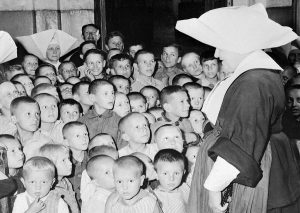 During the years of World War II, so much destruction brought with it the loss of jobs and homes. Along with the loss of jobs came poverty for many people. The smallest necessity became a “luxury” to people who had no problem making a living before. Many children were caught in the post-war poverty, because they lost their parents in the war. The orphanages were filled with children who were still in a daze, and trying to learn to be pretty much on their own, while still under the supervision of the state. I can only imagine how these little ones must have felt. Their parents were gone, they were grieving, and they were tossed into a strange building with many other children, all in the same boat. I’m sure the people running the orphanage did their best to comfort the children, but there were just so many of them.
During the years of World War II, so much destruction brought with it the loss of jobs and homes. Along with the loss of jobs came poverty for many people. The smallest necessity became a “luxury” to people who had no problem making a living before. Many children were caught in the post-war poverty, because they lost their parents in the war. The orphanages were filled with children who were still in a daze, and trying to learn to be pretty much on their own, while still under the supervision of the state. I can only imagine how these little ones must have felt. Their parents were gone, they were grieving, and they were tossed into a strange building with many other children, all in the same boat. I’m sure the people running the orphanage did their best to comfort the children, but there were just so many of them.
I’m sure that joy was stranger to most of the children. And I’m sure that the people who cared for them were looking for any way to put a smile on the faces of the children. Little did they know, how such a small thing as shoes, could change everything. They found out, when the Junior Red Cross in the United States of America put together boxes of what most of us would consider necessities to give to the children in Europe.
One six year old Austrian boy named Werfel, was photographed when he got a new pair of shoes at the Am Himmel orphanage, donated to him in the Christmastime care box. The picture taken of little Werfel, was enough to bring tears to the eyes of anyone who saw it. They may have been happy tears, but they were highly emotional tears nevertheless. Most kids these days, would be almost disappointed to receive a pair o shoes as  a gift…unless they were the latest in cool shoes. Little Werfel was beyond happy. He held the shoes to his chest and looked to the sky, as I he couldn’t possibly contain his happiness. The photographer probably took the picture through tear filled eyes. I know that’s what I would have done as the photographer. It was impossible not to be filled with emotion. “The photograph was first published in LIFE magazine on December 30, 1946 (on page 22) and later, again, on September 24, 1951 (on page 180). The photograph was shot by Gerald Waller, in 1946, and was titled “New Shoes”. The little boy, Werfel, was among the children who were brought to the USA after being deported from Israel / Palestine, where they arrived after liberation from the concentration camps. The image was published with the following caption in the 1946 issue. “EUROPE’S CHILDREN – Christmas brings joy and sadness.”
a gift…unless they were the latest in cool shoes. Little Werfel was beyond happy. He held the shoes to his chest and looked to the sky, as I he couldn’t possibly contain his happiness. The photographer probably took the picture through tear filled eyes. I know that’s what I would have done as the photographer. It was impossible not to be filled with emotion. “The photograph was first published in LIFE magazine on December 30, 1946 (on page 22) and later, again, on September 24, 1951 (on page 180). The photograph was shot by Gerald Waller, in 1946, and was titled “New Shoes”. The little boy, Werfel, was among the children who were brought to the USA after being deported from Israel / Palestine, where they arrived after liberation from the concentration camps. The image was published with the following caption in the 1946 issue. “EUROPE’S CHILDREN – Christmas brings joy and sadness.”
It was said that, “For many of Europe’s children there was a Santa Claus this Christmas. When a big box from the American Red Cross arrived at Vienna’s Am Himmel orphanage, shoes and coats and dresses tumbled out. Like the youngster (in the picture), the children who had seen no new clothes throughout the war smiled to high heaven. But for thousands of other European children there was no Santa Claus. When a boatload of illegal Jewish immigrants arrived at Haifa, Palestine recently, two Polish children (opposite) got separated from their parents. Tears filled the eyes of the boy, and his wan sister clutched him protectively. They were later reunited with their parents, but the whole family was shipped to Cyprus.”
The picture has stayed in my memory since the first time I saw it. To see that little boy so overjoyed…over shoes, was so beautiful. The photographer caught the picture perfectly. That moment was very likely one of the first truly happy moments that little boy had felt in quite some time. An adult, no matter the need would never 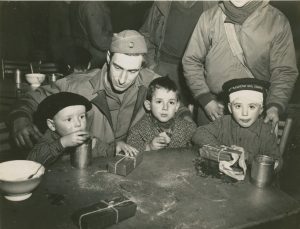 have shown such deep joy, probably because they would still be wrapped up in the poverty of the time, while the child was able to look beyond all that,and see the pure joy of the gift. The child could simply enjoy and cherish what has just been given to him, even though he was living in an orphanage…even though historical events had just unfolded,robbing him of his comfortable life…even though these were hand-me-downs. It made no difference to this boy, and it reminds us of how flawed our thinking is. We tend to look at the negatives in life and focus on them. Not this boy. He was happy with the tiniest positive thing that came into his life. It’s a lesson we should all learn. Sometimes we all need to appreciate the little things in life.
have shown such deep joy, probably because they would still be wrapped up in the poverty of the time, while the child was able to look beyond all that,and see the pure joy of the gift. The child could simply enjoy and cherish what has just been given to him, even though he was living in an orphanage…even though historical events had just unfolded,robbing him of his comfortable life…even though these were hand-me-downs. It made no difference to this boy, and it reminds us of how flawed our thinking is. We tend to look at the negatives in life and focus on them. Not this boy. He was happy with the tiniest positive thing that came into his life. It’s a lesson we should all learn. Sometimes we all need to appreciate the little things in life.
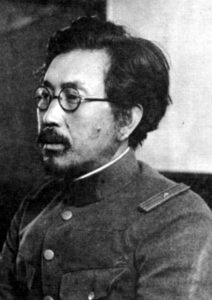 When we think of wartime atrocities, most of us think of the Holocaust, and that was indeed a horrible atrocity. Nevertheless, there have been a number of horrible dictators in history, and most of them committed some kind of atrocity. One of the worst atrocities in history, is one that very few people even know about. Most people have heard about the horrible experiments the Nazis performed on humans. The Nazi doctor, Joseph Mengele headed up that torture practice. But the Nazis weren’t alone in conducting cruel experiments on humans. The Imperial Japanese Army’s Unit 731. Some of the details of this unit’s activities are still uncovered. I don’t understand how anyone could have such little regard for human life, as to conduct some of the horrible experiments n them that some of these dictators and their cohorts did.
When we think of wartime atrocities, most of us think of the Holocaust, and that was indeed a horrible atrocity. Nevertheless, there have been a number of horrible dictators in history, and most of them committed some kind of atrocity. One of the worst atrocities in history, is one that very few people even know about. Most people have heard about the horrible experiments the Nazis performed on humans. The Nazi doctor, Joseph Mengele headed up that torture practice. But the Nazis weren’t alone in conducting cruel experiments on humans. The Imperial Japanese Army’s Unit 731. Some of the details of this unit’s activities are still uncovered. I don’t understand how anyone could have such little regard for human life, as to conduct some of the horrible experiments n them that some of these dictators and their cohorts did.
For 40 years, the horrific activities of “Unit 731” remained one the most closely guarded secrets of World War II. It was not until 1984 that Japan acknowledged what it had done and long denied. The vile experiments on humans conducted by the unit in preparation for germ warfare were atrocious. The Japanese doctors deliberately infected people with plague, anthrax, cholera and other pathogens. It is estimated that as many as 3,000 enemy soldiers and civilians were used as guinea pigs. Some of the more horrific experiments included surgery without anesthesia to see how the human body handled pain, and pressure chambers to see how much pressure a human could take before his eyes popped out.
The compound for Unit 731 was set up in 1938 in Japanese-occupied China with the aim of developing biological weapons. It also operated a secret research and experimental school in Shinjuku, central Tokyo. Its 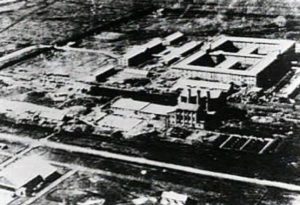 head was Lieutenant Shiro Ishii. Japanese universities and medical schools also supported the unit, by supplying doctors and research staff. I can’t imagine being assigned to such a facility. The picture now emerging about Unit 731’s activities is horrifying. According to reports, which were never officially admitted by the Japanese authorities, the unit used thousands of Chinese and other Asian civilians and wartime prisoners as human guinea pigs to breed and develop killer diseases. Many of the prisoners, who were murdered in the name of research, were used in hideous vivisection and other medical experiments, including barbaric trials to determine the effect of frostbite on the human body. To ease the conscience of those involved, if that is even possible, the prisoners were referred to not as people or patients, but as “Maruta”, which means wooden logs. I suppose they thought it would help, but I doubt if it did.
head was Lieutenant Shiro Ishii. Japanese universities and medical schools also supported the unit, by supplying doctors and research staff. I can’t imagine being assigned to such a facility. The picture now emerging about Unit 731’s activities is horrifying. According to reports, which were never officially admitted by the Japanese authorities, the unit used thousands of Chinese and other Asian civilians and wartime prisoners as human guinea pigs to breed and develop killer diseases. Many of the prisoners, who were murdered in the name of research, were used in hideous vivisection and other medical experiments, including barbaric trials to determine the effect of frostbite on the human body. To ease the conscience of those involved, if that is even possible, the prisoners were referred to not as people or patients, but as “Maruta”, which means wooden logs. I suppose they thought it would help, but I doubt if it did.
Before Japan’s surrender, the site of the experiments was completely destroyed, so that no evidence is left. I don’t suppose we would have known anything had it not been for the pictures that have surfaced, and people who have told the story later. After the site was destroyed, the remaining 400 prisoners were shot and the employees of the unit had to swear secrecy, or risk their own death. The mice kept in the laboratory were then 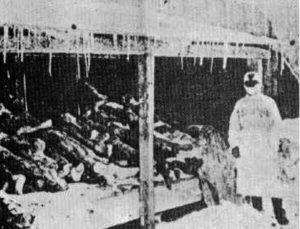 released, which most likely cost the lives of as many as 30,000 people, because the mice were infected with the Bubonic Plague, and they spread the disease. Few of those involved with Unit 731 have admitted their guilt. Some were caught in China at the end of the war, were arrested and detained, but only a handful of them were prosecuted for war crimes. In Japan, not one was brought to justice. In a secret deal, the post-war American administration gave them immunity for prosecution in return for details of their experiments. Some of the worst criminals, including Hisato Yoshimura, who was in charge of the frostbite experiments, went on to occupy key medical and other posts in public and private sectors…their guilty feelings, if they had any, existed only in their own minds.
released, which most likely cost the lives of as many as 30,000 people, because the mice were infected with the Bubonic Plague, and they spread the disease. Few of those involved with Unit 731 have admitted their guilt. Some were caught in China at the end of the war, were arrested and detained, but only a handful of them were prosecuted for war crimes. In Japan, not one was brought to justice. In a secret deal, the post-war American administration gave them immunity for prosecution in return for details of their experiments. Some of the worst criminals, including Hisato Yoshimura, who was in charge of the frostbite experiments, went on to occupy key medical and other posts in public and private sectors…their guilty feelings, if they had any, existed only in their own minds.
 During World War I, Britain, like the United States would have to do in World War II, had to employ large numbers of women into jobs vacated by men who had gone to fight in the war. They also had to create new jobs as part of the war effort. As an example, women were hired in munitions factories. The high demand for weapons resulted in the munitions factories becoming the largest single employer of women during 1918. It was a job that many people resisted, mainly because it was seen as “men’s work.” When I think about the work these women were doing, I find myself much more concerned with the toxicity and danger of the materials they were working with, than whether or not the job should be done by a man. Of course, the materials would present the same danger to the men, but the men had always felt like the dangerous work should fall to them.
During World War I, Britain, like the United States would have to do in World War II, had to employ large numbers of women into jobs vacated by men who had gone to fight in the war. They also had to create new jobs as part of the war effort. As an example, women were hired in munitions factories. The high demand for weapons resulted in the munitions factories becoming the largest single employer of women during 1918. It was a job that many people resisted, mainly because it was seen as “men’s work.” When I think about the work these women were doing, I find myself much more concerned with the toxicity and danger of the materials they were working with, than whether or not the job should be done by a man. Of course, the materials would present the same danger to the men, but the men had always felt like the dangerous work should fall to them.
Nevertheless, with the introduction of conscription in 1916 everything changed. Conscription refers to the process of automatically calling up men and women for military service. During the First World War men (it only applied to men at this time) who were conscripted into the armed forces had no choice but to go and fight, even if they did not want to. Around 1916, with the need becoming serious, the government began  coordinating the employment of women through campaigns and recruitment drives. This led to women working in areas of work that were formerly reserved for men. Jobs such as, for example railway guards, ticket collectors, buses, tram conductors, postal workers, police, firefighters, as well as bank tellers and clerks. Some women also worked heavy or precision machinery in engineering, led cart horses on farms, and worked in the civil service and factories.
coordinating the employment of women through campaigns and recruitment drives. This led to women working in areas of work that were formerly reserved for men. Jobs such as, for example railway guards, ticket collectors, buses, tram conductors, postal workers, police, firefighters, as well as bank tellers and clerks. Some women also worked heavy or precision machinery in engineering, led cart horses on farms, and worked in the civil service and factories.
By 1917 the British munitions factories, which by this time, primarily employed women workers, produced 80% of the weapons and shells used by the British Army. The women working there soon became known as “canaries” because they had to handle TNT (the chemical compound trinitrotoluene that is used as an explosive agent in munitions) which caused their skin to turn yellow. The nickname might have been a cute joke, but the job the women did was far from funny. These women risked their lives working with poisonous substances without adequate protective clothing or the required safety measures, that we know are needed now. During the years of World War I, around 400 women died from overexposure to TNT. I wonder too, how many died in 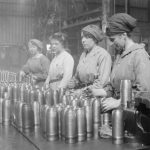 the years that followed the war, from exposure to the same chemicals that had killed the original 400 women.
the years that followed the war, from exposure to the same chemicals that had killed the original 400 women.
As if the dangerous working conditions weren’t enough, women were also paid significantly less than men in comparable positions. In 1918, women workers on London’s buses, trams, and subways organized a strike and managed to win equal pay for equal work. When the war ended, many women were fired to free up jobs for returning veterans. Some thanks that was. I’m sure many of the women were glad to go back to their prior jobs, or go home to take care of their families, but to be fired” was just wrong in every way. Nevertheless, in return for their hard work, these women were fired so that the returning men could have a job again.
 For centuries, I think most people thought Earth was alone in the universe, at least when it came to planets. It was inevitable that people would decide that they wanted to know more about the numerous stars, the moon, and the sun. Once the telescope was invented, with the earliest workings towards the design of the refracting telescope being made by German-Dutch lensmaker Hans Lippershey in 1608, people, or at least a few people, were able to see the things that really existed beyond Earth’s atmosphere. I can only imagine the shock as the first viewing proclaimed, quite loudly, that we were not alone in the universe…not even in the realm of planets, not to mention galaxies.
For centuries, I think most people thought Earth was alone in the universe, at least when it came to planets. It was inevitable that people would decide that they wanted to know more about the numerous stars, the moon, and the sun. Once the telescope was invented, with the earliest workings towards the design of the refracting telescope being made by German-Dutch lensmaker Hans Lippershey in 1608, people, or at least a few people, were able to see the things that really existed beyond Earth’s atmosphere. I can only imagine the shock as the first viewing proclaimed, quite loudly, that we were not alone in the universe…not even in the realm of planets, not to mention galaxies.
Thinking about the vastness of the universe has a tendency to make you feel very small, and I don’t suppose many people in the 1600s were very comfortable with that. These days the thought of the other planets in our galaxy doesn’t really bother us, and in fact it seems completely normal to us. As my husband, Bob and I have been going on our nightly walks, I have been watching the movement of several planets…namely Mars, Jupiter, and Saturn. Just the thought of these huge, star-like celestial bodies, at least to the naked eye, makes me think about how amazing God’s creation is. I have been able to picture in my mind, how these planets look in the universe, and now, the idea that they are stars seems absurd. Of course, my own “revelation” of that fact came centuries after the great men of science figured that fact out, and of course, that “revelation”didn’t creep into my mind today, but was rather taught to me over the years of my schooling. Still, sometimes while you know something is a fact, the enormity of it takes much longer to fully register in your head. That is the way i feel about it,after a fashion anyway…as if suddenly, I can almost see the planets with the naked eye.
It makes me wonder how the various scientists, who discovered each of the planets in our galaxy, felt the first time the telescope found a planet, especially a new one…or shall I say, one that was never discovered before that moment. With that thought running around in my head, I learned that on September 23, 1846, German astronomer Johann Gottfried Galle discovers the planet Neptune at the Berlin Observatory. We all now know Neptune as the eight planet in our solar system, and because it was the eighth, it was further out in space than  the seven that were discovered before it. I can only imagine the excitement he felt in that moment. He was looking upon something no other human being had seen before. I don’t know if he had any concept of how big the planet was in comparison to Earth, but we now know that Neptune is the eighth and farthest known planet from the Sun in the Solar System, because Pluto was later found and then after years as a planet, discounted as a planet and named a dwarf planet. In the Solar System Neptune is the fourth-largest planet by diameter, the third-most-massive planet, and the densest giant planet. Neptune is 17 times the mass of Earth. At that size, I would say that Neptune’s discovery was by no means a small thing.
the seven that were discovered before it. I can only imagine the excitement he felt in that moment. He was looking upon something no other human being had seen before. I don’t know if he had any concept of how big the planet was in comparison to Earth, but we now know that Neptune is the eighth and farthest known planet from the Sun in the Solar System, because Pluto was later found and then after years as a planet, discounted as a planet and named a dwarf planet. In the Solar System Neptune is the fourth-largest planet by diameter, the third-most-massive planet, and the densest giant planet. Neptune is 17 times the mass of Earth. At that size, I would say that Neptune’s discovery was by no means a small thing.

 My nephew, Jason Sawdon, who is married to my niece, Jessi, is a highway patrolman by trade, but a family man in reality. He’s a good patrolman, who keeps his cool in every situation, and treats people with respect, even if he has to give them a ticket or arrest them. People appreciate that. He is the crash investigator for the patrol and he is very precise and smart about skid marks and distances and figuring out exactly what happened. Accident investigation is an important job. It is vital to know who was at fault and what other factors might have played a part in the crash.
My nephew, Jason Sawdon, who is married to my niece, Jessi, is a highway patrolman by trade, but a family man in reality. He’s a good patrolman, who keeps his cool in every situation, and treats people with respect, even if he has to give them a ticket or arrest them. People appreciate that. He is the crash investigator for the patrol and he is very precise and smart about skid marks and distances and figuring out exactly what happened. Accident investigation is an important job. It is vital to know who was at fault and what other factors might have played a part in the crash.
When Jason met Jessi, I think he knew right away that she was the one for him. They make such a cute couple, and there is no doubt about how they feel about each other, because they wear their love on their faces. It is totally obvious to all of us that they are very happy together. Jessi and Jason are two people who always seem to be happy and laughing. Of course, they bring much of their happiness with them, using nothing but their sense of humor. Jason is always playing jokes on people. He is a great dad to their daughter, Adelaide, and husband to Jessi. Jason just seems to get Jessi.  Whatever she wants Jason works to get for her. That means a lot to her mom and dad…knowing their daughter is well cared for. Today, Jessi told Jason that she wanted a greenhouse, so they wouldn’t lose all of their tomatoes when it gets cold next week. So, they went to Menard’s, and got everything needed to build it. Jason had it done in just about two hours!! When Jason and Jessi were redoing their master bath, Jessi told him what she would like, and he made sure there was a way to include everything she asked for in a small space!! Not always an easy task, but he got it done. Jason is the answer to prayer for Jessi, and her family, and a huge blessing for Adelaide. Jason is the kind of guy who is great at building people up, and that is a blessing for all the people in his life.
Whatever she wants Jason works to get for her. That means a lot to her mom and dad…knowing their daughter is well cared for. Today, Jessi told Jason that she wanted a greenhouse, so they wouldn’t lose all of their tomatoes when it gets cold next week. So, they went to Menard’s, and got everything needed to build it. Jason had it done in just about two hours!! When Jason and Jessi were redoing their master bath, Jessi told him what she would like, and he made sure there was a way to include everything she asked for in a small space!! Not always an easy task, but he got it done. Jason is the answer to prayer for Jessi, and her family, and a huge blessing for Adelaide. Jason is the kind of guy who is great at building people up, and that is a blessing for all the people in his life.
Jason is always a helper. He has a mechanical engineering degree and so understands how things work. Jason is always willing to share his knowledge with anyone who asks for his help. His degree makes Jason is a great asset for anyone on whatever project they are doing at the time…from electrical, to mechanical, to water, to 
 building, Jason just seems to know how it works. That makes Jason a big help to the family. Jason is always offering his time. He is a helper to anyone in need, and he is so kind. This morning, Jessi and Jason came upon a lady downtown who had fallen and hurt her knee. Jason ran right up and help to pick her up, and literally carried her, to a nearby bench. Then, he carried her to her vehicle when the lady’s husband brought it around. Lots of people would loo the other way, but never Jason. He is always there for people. Today is Jason’s birthday. Happy birthday Jason!! Have a great day!! We love you!!
building, Jason just seems to know how it works. That makes Jason a big help to the family. Jason is always offering his time. He is a helper to anyone in need, and he is so kind. This morning, Jessi and Jason came upon a lady downtown who had fallen and hurt her knee. Jason ran right up and help to pick her up, and literally carried her, to a nearby bench. Then, he carried her to her vehicle when the lady’s husband brought it around. Lots of people would loo the other way, but never Jason. He is always there for people. Today is Jason’s birthday. Happy birthday Jason!! Have a great day!! We love you!!
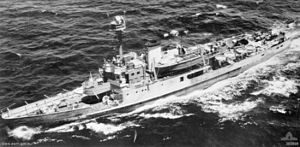 In the midst of World War II, February 1942, to be more exact, the Japanese fleet gave the combined Dutch-American-Australian-British fleet a beating that almost wiped them out completely, during the Battle of the Java Sea. The defeat brought about the Japanese occupation of the entire Netherlands East Indies. After the battle ended, only four Dutch warships were left in the Dutch East Indies. They knew there was no way they would be able to take down the Japanese fleet by themselves, so they decided to try to escape to Australia. The failed attempt left three of the four ships sunk, and one in hiding. The problem they had, was that the seas were full of warships and the skies were swarming with Japanese planes. It was going to be virtually impossible to sail the 1,000 miles of ocean to safety. The HNLMS Abraham Crijnssen, which was the last ship, had a big problem, for which they found a crazy solution.
In the midst of World War II, February 1942, to be more exact, the Japanese fleet gave the combined Dutch-American-Australian-British fleet a beating that almost wiped them out completely, during the Battle of the Java Sea. The defeat brought about the Japanese occupation of the entire Netherlands East Indies. After the battle ended, only four Dutch warships were left in the Dutch East Indies. They knew there was no way they would be able to take down the Japanese fleet by themselves, so they decided to try to escape to Australia. The failed attempt left three of the four ships sunk, and one in hiding. The problem they had, was that the seas were full of warships and the skies were swarming with Japanese planes. It was going to be virtually impossible to sail the 1,000 miles of ocean to safety. The HNLMS Abraham Crijnssen, which was the last ship, had a big problem, for which they found a crazy solution.
The HNLMS Abraham Crijnssen was a slow-moving minesweeper vessel that could get up to about 15 knots. It also had very few guns…a single 3-inch gun and two Oerlikon 20mm cannons…making it a sitting duck for the Japanese bombers that circled above. The secret weapon of the HNLMS Abraham Crijnssen, however, was it’s 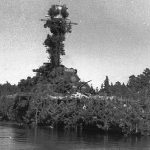 captain, who came up with a crazy scheme to disguise the ship as a small island. The Abraham Crijnssen was a relatively small ship, but it was still a big object, measuring approximately 180 feet long and 25 feet wide. The crew used foliage from island vegetation and gray paint to make the ship’s hull look like rock faces. They figured that it was better to be a camouflaged ship in deep trouble, than a completely exposed ship. Still, logic said that the Japanese would probably notice a mysterious moving island, and they might wonder what would happen if they shot at it. So,the plan came about that during the day, they would not move…thereby actually becoming an island.
captain, who came up with a crazy scheme to disguise the ship as a small island. The Abraham Crijnssen was a relatively small ship, but it was still a big object, measuring approximately 180 feet long and 25 feet wide. The crew used foliage from island vegetation and gray paint to make the ship’s hull look like rock faces. They figured that it was better to be a camouflaged ship in deep trouble, than a completely exposed ship. Still, logic said that the Japanese would probably notice a mysterious moving island, and they might wonder what would happen if they shot at it. So,the plan came about that during the day, they would not move…thereby actually becoming an island.
Moving only at night, the ship was able to blend in with the thousands of other tiny islands around Indonesia, and miraculously the Japanese didn’t notice the moving island. The Crijnssen managed to go undetected by Japanese planes and avoid the destroyer that sank the other Dutch warships, surviving the eight-day journey to Australia and reuniting with Allied forces, and fought with the Allies until the end of the war. During those years of service under the Australian Navy flag, Abraham Crijnssen detected a submarine, while escorting a convoy to Sydney through the Bass Strait, on 26th of January 1943. Along with the Australian HMAS Bundaberg, they depth charged the submarine. No wreckage of the submarine was found, nor was the kill 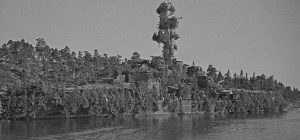 confirmed, but the ex-minesweeper Abraham Crijnssen suffered some damage due to hastily released depth charges. Several fittings and pipes were damaged, and all of her centerline had to be replaced during a week-long-dry docking. After this incident, the ship was returned to Royal Netherlands Navy service on May 5, 1943, spending the rest of the war in Australian waters. Abraham Crijnssen ended its WWII career just like the ship started it, as a minesweeper that was responsible for clearing mines in Kupang Harbor before the arrival of an RAN force to accept the Japanese surrender of Timor.
confirmed, but the ex-minesweeper Abraham Crijnssen suffered some damage due to hastily released depth charges. Several fittings and pipes were damaged, and all of her centerline had to be replaced during a week-long-dry docking. After this incident, the ship was returned to Royal Netherlands Navy service on May 5, 1943, spending the rest of the war in Australian waters. Abraham Crijnssen ended its WWII career just like the ship started it, as a minesweeper that was responsible for clearing mines in Kupang Harbor before the arrival of an RAN force to accept the Japanese surrender of Timor.

